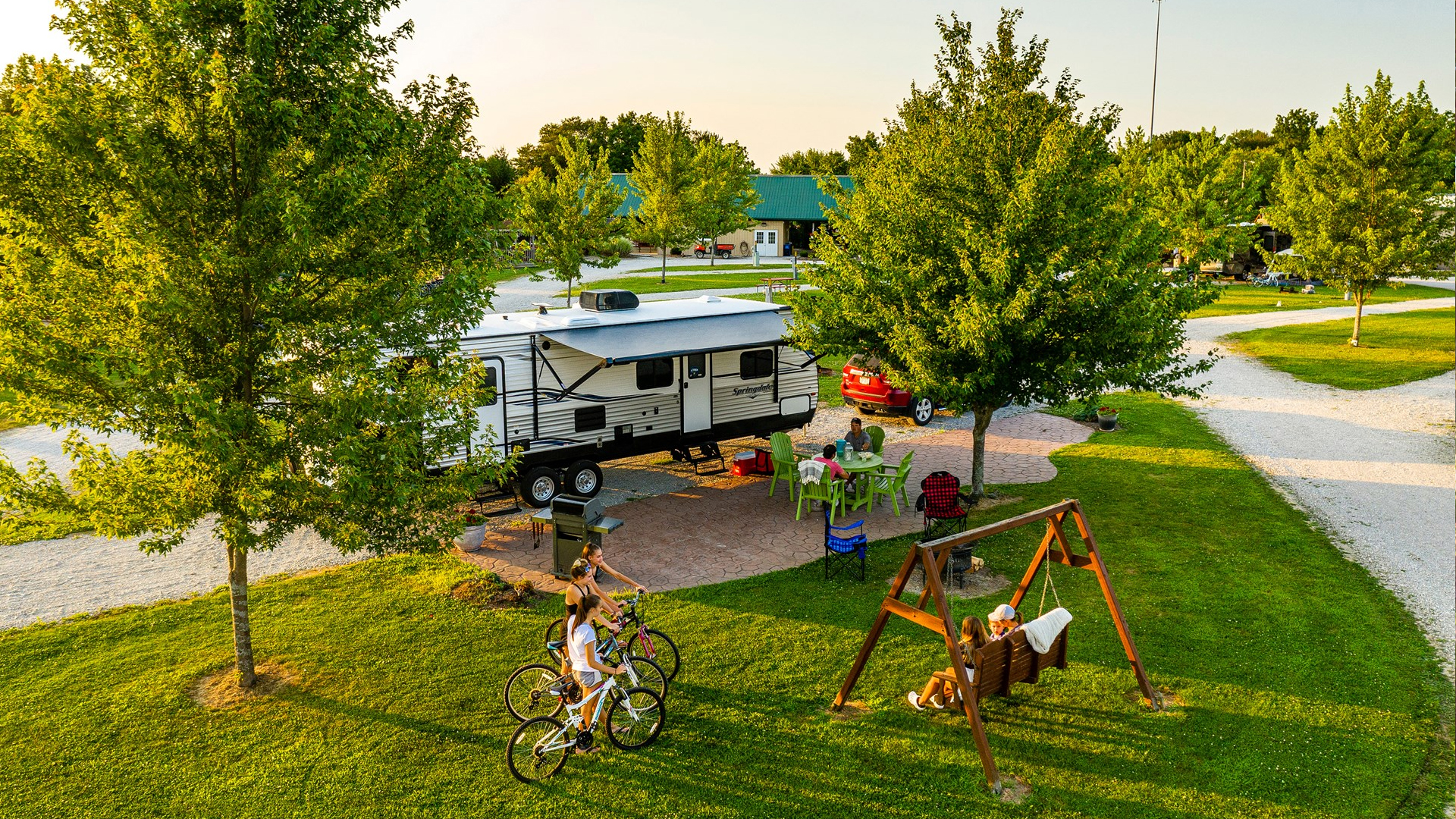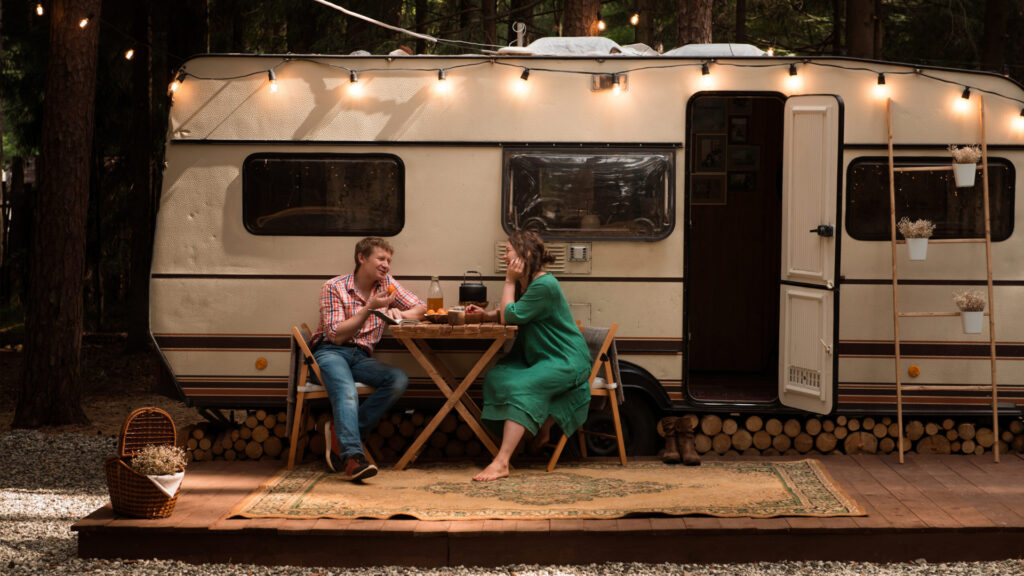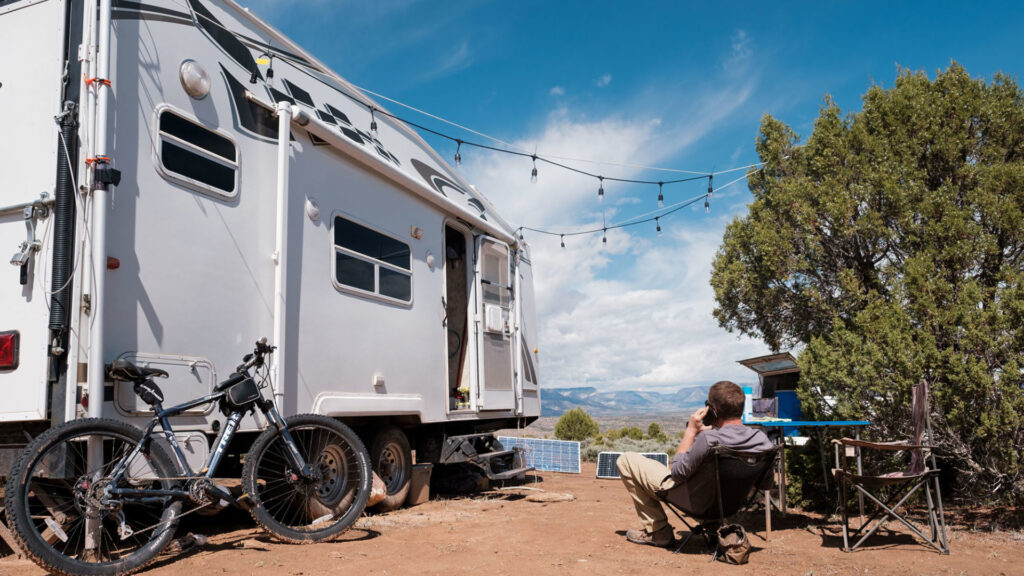
10 Essential Tips for Successful Stationary RV Living
Table of contents
- 1. Choose the Right RV for Stationary Living
- 2. Find the Perfect Location
- 3. Set Up Reliable Utilities
- 4. Maximize Storage and Organization
- 5. Create a Comfortable Outdoor Living Space
- 6. Adapt to Seasonal Changes
- 7. Establish a Maintenance Routine
- 8. Navigate Legal and Financial Considerations
- 9. Build a Sense of Community
- 10. Plan for the Future
- FAQs
- Elevate Your Stationary RV Living with Custom Skirting
- Related Articles
Stationary RV living has become an increasingly popular lifestyle choice for those seeking simplicity, cost savings, and the flexibility to live in a variety of settings. Whether you’re looking to downsize, save money, or enjoy a more mobile lifestyle without the constant travel, stationary RV living offers a unique opportunity to do so. This guide provides essential tips and stationary RV living must-haves for anyone considering this lifestyle, especially for beginners, and covers everything from choosing the right RV to long-term planning.
1. Choose the Right RV for Stationary Living
The first step in stationary RV living for beginners is selecting the right RV that suits your needs for long-term habitation. Unlike RVs used for travel, a stationary RV should offer the space and amenities necessary for comfortable living.
Size and Layout
When it comes to stationary RV living, size matters. A larger RV with a spacious layout is often more suitable for long-term stays. Consider a fifth-wheel trailer or a Class A motorhome, which tends to offer more living space, better kitchen facilities, and more comfortable sleeping arrangements.
Insulation and Four-Season Capabilities
If you plan to live in your RV year-round, it’s crucial to choose a model with good insulation and four-season capabilities. This means the RV should be able to handle both hot summers and cold winters. Look for RVs with double-pane windows, well-insulated walls, and robust heating and cooling systems.
Livability Features
For stationary RV living, amenities like a full kitchen, a spacious bathroom, and ample storage are must-haves. The goal is to create a home-like environment where you can live comfortably without feeling cramped.
2. Find the Perfect Location

Choosing the right location is just as important as selecting the right RV. The location will significantly impact the stationary RV living experience for beginners, from the climate to the availability of amenities. When considering stationary RV living must-haves, the right location plays a crucial role in ensuring comfort and convenience.
Climate Considerations
When selecting a location for stationary RV living, consider the climate. Some RVs handle extreme weather better than others, so it’s important to choose a location that matches your RV’s capabilities. Warmer climates can reduce heating costs, while cooler areas might require better insulation.
Proximity to Amenities
Access to essential amenities such as grocery stores, medical facilities, and entertainment options is crucial. Whether you choose to park in an RV park or on private land, consider the distance to these amenities.
RV Parks vs. Private Land
Deciding between an RV park and private land is another key consideration. RV parks offer amenities like electricity, water, sewer hookups, and community activities, making them a convenient choice for many. On the other hand, parking on private land can offer more privacy and freedom but may require additional setup for utilities.
3. Set Up Reliable Utilities
Having reliable utilities is critical for comfortable stationary RV living for beginners. Without access to essential services, life in an RV can quickly become challenging.
Electricity
Ensure that your RV has a stable and reliable source of electricity. Many RV parks provide electrical hookups, but if you’re on private land, you may need to install solar panels or connect to the local grid. It’s also a good idea to have a backup generator in case of power outages.
Water and Sewer
Access to clean water and a functional sewer system is non-negotiable for stationary RV living. Most RV parks offer water and sewer hookups, but if you’re on private land, you’ll need to consider alternatives like well water and a septic system. Regularly check for leaks and ensure that your water system is winterized if you live in a cold climate.
Internet Connectivity
Reliable internet access is essential for modern stationary RV living, especially if you work remotely. Research the best options for your location, whether it’s a mobile hotspot, satellite internet, or a wired connection. Make sure your internet setup can handle your daily usage needs.
4. Maximize Storage and Organization
Living in an RV requires a shift in how you approach storage and organization. With limited space, it’s important to make the most of every inch.
Creative Storage Solutions
Maximizing storage space is a key aspect of stationary RV living. Consider using under-bed storage, hanging organizers, and over-the-door hooks to create additional space. Utilize vertical storage options like shelves and stackable containers to keep your belongings organized.
Decluttering
Decluttering is essential when living in a small space. Keep only what you need and love, and get rid of items that no longer serve a purpose.
Organization Techniques
Adopting good organization techniques can significantly enhance your RV stationary living experience. Labeling containers, keeping similar items together, and regularly reassessing your storage needs will help you maintain an orderly space.
5. Create a Comfortable Outdoor Living Space

An inviting outdoor living space can greatly enhance your stationary RV living experience by extending your living area beyond the RV itself.
Patios and Decks
Consider setting up a patio or deck outside your RV. This can serve as an additional living space where you can relax, dine, or entertain guests. Portable decks and outdoor rugs can make the space feel more permanent and comfortable.
Outdoor Kitchens
If you enjoy cooking outdoors, consider setting up an outdoor kitchen. A grill, a prep table, and a portable sink can transform your outdoor area into a functional and enjoyable cooking space.
Landscaping
Adding some landscaping around your RV can make it feel more like home. Potted plants, garden beds, and outdoor lighting can enhance the aesthetic appeal and create a more inviting atmosphere.
6. Adapt to Seasonal Changes
One of the challenges of stationary RV living is dealing with seasonal changes. Proper preparation can make your RV comfortable year-round.
Insulation and Heating
In cold climates, additional insulation and a reliable heating system are essential. Skirting your RV can help reduce heat loss and protect your plumbing from freezing.
Cooling
For hot climates, ensure your RV’s air conditioning system is up to the task. Reflective window coverings, fans, and portable air conditioners can help keep your RV cool.
Weather Protection
Protecting your RV from extreme weather conditions is crucial. Consider investing in an RV cover for protection from the elements and use storm straps or anchors to secure your RV in case of strong winds or storms.
7. Establish a Maintenance Routine
Regular maintenance is key to keeping your RV in good condition and ensuring a comfortable living environment, especially when it comes to stationary RV living must-haves.
Maintenance Checklist
Develop a maintenance checklist that includes tasks like checking the roof for leaks, inspecting seals around windows and doors, and maintaining the plumbing and electrical systems.
Preventive Measures
Taking preventive measures can help you avoid costly repairs. For example, regularly cleaning the RV’s exterior can prevent damage from dirt and debris, while keeping your roof clear of leaves and branches can prevent leaks.
8. Navigate Legal and Financial Considerations
Stationary RV living involves navigating certain legal and financial considerations that differ from traditional homeownership.
Insurance
Ensure that your RV insurance policy covers stationary living. This might require additional coverage for personal belongings, liability, and any modifications you make to your RV.
Taxes
Depending on where you park your RV, you may be subject to property taxes or other local taxes. Some states also have specific regulations regarding RV residency, so it’s important to be aware of any potential tax implications.
Local Regulations
Local zoning laws and regulations may impact where and how you can park your RV for long-term living. Research these laws before settling in a particular location to avoid any legal issues.
9. Build a Sense of Community

Living in an RV doesn’t mean you have to be isolated. Building a sense of community can enrich your stationary RV living experience.
Connecting with Other RV Residents
RV parks often have a strong sense of community, with social events, communal spaces, and opportunities to meet other residents. Participate in park activities and get to know your neighbors.
Maintaining Relationships
Living in an RV doesn’t mean you have to lose touch with friends and family. Make an effort to maintain your relationships through regular communication and visits.
10. Plan for the Future
While stationary RV living is a flexible and cost-effective lifestyle, it’s important to plan for the future.
Long-Term Health Care
Consider how you’ll handle health care needs, especially as you age. Research local health care facilities and services, and consider investing in a health insurance plan that covers out-of-state care if you plan to move locations.
Retirement Considerations
If you’re nearing retirement, think about how stationary RV living fits into your long-term plans. Consider factors like access to amenities, healthcare, and the potential need to transition to a more traditional living arrangement.
Transitioning to Other Living Arrangements
While stationary RV living might be ideal now, circumstances can change. Whether it’s due to health, financial reasons, or simply a desire for change, it’s important to have a plan in place for transitioning to another type of housing if needed.
FAQs
What is stationary RV living?
Stationary RV living refers to the practice of living in an RV that remains parked in one location for an extended period, as opposed to traveling regularly.
Is RV living cheaper than owning a home?
RV living can be more affordable than traditional homeownership, especially when factoring in lower utility costs, property taxes, and maintenance.
Is there an RV you can live in year-round?
Yes, there are RVs designed for year-round living, often referred to as four-season RVs. These RVs are equipped with features like enhanced insulation, double-pane windows, and robust heating and cooling systems to handle extreme weather conditions.
Elevate Your Stationary RV Living with Custom Skirting
Ready to enhance your stationary RV living experience? Protect your RV with Custom Skirting’s tailored solutions. Whether you choose to enjoy a stay at Black Hawk Creek RV Park while we craft your skirting or prefer the convenience of our Fit & Ship service, we’ve got you covered. Our “No-Snap, No-Gap” system ensures your RV is ready for any weather. Book your custom skirting today and enjoy comfort, protection, and peace of mind in your RV home!
